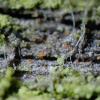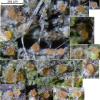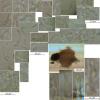
09-12-2025 12:06
 Andgelo Mombert
Andgelo Mombert
Bonjour,Je recherche l'article concernant Hypobryo

07-12-2025 16:07
Arnold BüschlenHallo, ich habe in einer Moos-Aufsammlung (epiphy

08-12-2025 21:04
Mark Stevens"Hello everyone,I'm relatively new to microscopy (

08-12-2025 18:59
 Lothar Krieglsteiner
Lothar Krieglsteiner
.. found by a seminar-participant, I do not know t

08-12-2025 17:37
 Lothar Krieglsteiner
Lothar Krieglsteiner
20.6.25, on branch of Abies infected and thickened

16-03-2014 22:00
Hello,I found this species a few months ago but ha

08-12-2025 13:39
Thomas Læssøehttps://svampe.databasen.org/observations/10572899
Trichonectria ? Bionectriaceae ? Between algae on Picea abies.
Perz Piotr,
27-09-2009 00:05
Yesterday I find this little, orange "nectrioid" fungus between algae on Picea abies wood. Because of short, hyaline, thick-walled hairs I'm thinking about Trichonectria. The hairs are septate.
Subiculum abundand, white, all over the base of perithecium.
Because of characteristic ascospores (asci are 8-spored) I think, you can help me to identifi this fungus with the macrophotos and micrs of ascospores.
best wishes
Pimpek
Perz Piotr,
27-09-2009 00:07
Perz Piotr,
27-09-2009 00:08
Perz Piotr,
27-09-2009 00:10
Re:Trichonectria ? Bionectriaceae ? Between algae on Picea abies.
very similar, macroscope and habitat & ecology was my found of Psoroglaena abscondita (Coppins & Vězda) Hafellner & Türk - but totally w/o hairs.
I think the ascospores are very characteristic, They are 2-celled (= 1-septate), also inside of living asci.
Note, that the perithecim collapsed when dry,
The hyaline, septate, thick-walled projecting hairs are mostly present around the ostiolar region (exactly like in Trichonectria rubefaciens (Ellis & Everh.) Diederich & Schroers)
thank you
Piotr
I think the ascospores are very characteristic, They are 2-celled (= 1-septate), also inside of living asci.
Note, that the perithecim collapsed when dry,
The hyaline, septate, thick-walled projecting hairs are mostly present around the ostiolar region (exactly like in Trichonectria rubefaciens (Ellis & Everh.) Diederich & Schroers)
thank you
Piotr
Javier Etayo,
27-09-2009 17:23
Re:Trichonectria ? Bionectriaceae ? Between algae on Picea abies.
Your sample could fit well in Trichonectria, a genus with several lichenicolous species. I have not seen this spores in any of the lichenicolous species, this and its habitat made it very interesting.
Best wishes. Javier Etayo
Best wishes. Javier Etayo



